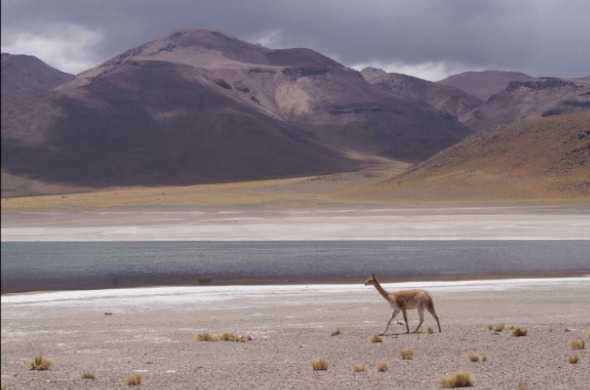
Vicuña is one of the finest and most precious fibers in the world. Even more prestigious than cashmere, this wool is also known as the "Fiber of the Gods".
Vicuña has earned this fame thanks to its characteristics of thinness, softness and exclusivity.
But let's start from the origin...
What animal is the vicuna?
It is a camelid that lives in the Andes, in South America. The extreme climatic variations to which it is subjected, living at altitudes between 3,200 and 4,800 meters, make its wool the softest and most refined in the world. Its under fleece, which is the layer used for the production of clothing, is composed of soft and ultra-fine hairs and has a high thermoregulation capacity.
Vicuña: history and characteristics of the fabric
Having a fiber with a diameter of 12 µm, thinner than cashmere, which reaches 15 µm, it can be compared to the ancient and forbidden Indian shahtoosh, a truly unique fiber in terms of its fineness, softness and exclusivity.
Vicuna wool was used by the ancient Incas to weave the king's clothes, while the common people were not allowed to kill these wonderful animals, even less to wear their mantle. Seasonal shearing was, and still is, a sacred ceremony involving the entire community.
It took place every four years in late summer, through the Chakku ceremony, in which the local communities pushed the vicuñas into the areas where the shearing took place and then released them under the supervision of the king. The ritual of shearing the vicuña never endangered its survival, as it did in the following period.
In fact, due to economic interests, following the Spanish colonization at the end of 1400, the hunting of this animal reached such high levels that it was defined as "a species destined for certain extinction". Many rules were issued to safeguard the species, but had no effect, until, in 1965, there were only 5,000 specimens.
Situation of the Vicuna today
Finally, in 1969 Vicuna was included in the list of endangered species and the CITES (international convention that regulates the trade of endangered animals and plants) allowed the end of its exploitation by decreeing the vicuña as a species with the highest degree of protection. Now, vicuña is protected by an association that allows local farmers to legally earn an income by bringing this fiber back to the market and protecting the animals from poaching.
To date, the wool of the delicate camelid is shorn by hand only every two years, in spring, or collected along the paths of the Andean highlands, respecting its wild state.

How much wool does a vicuna produce?
An adult specimen of vicuna produces only 200 grams of fiber every two years: just think that to make a coat you need the fleece of 35 vicuñas. For comparison, Merino sheep produce between 3 and 6 kilograms of wool every year.
How much does vicuña cost?
Scarcity of production of the vicuña increases the value of its wool, making it even more precious. The price of unprocessed vicuña (or vicuna) wool is over $400 per kilogram, while for ready-to-weave yarn it is around $2000.
Buy now Toosh Vicuna Online
In order to offer the best even to the most demanding customers, we have introduced three new exclusive items:
These stoles are the perfect combination of the most prestigious fabric in the world and our patented production method for processing extra-fine textile fibers.






